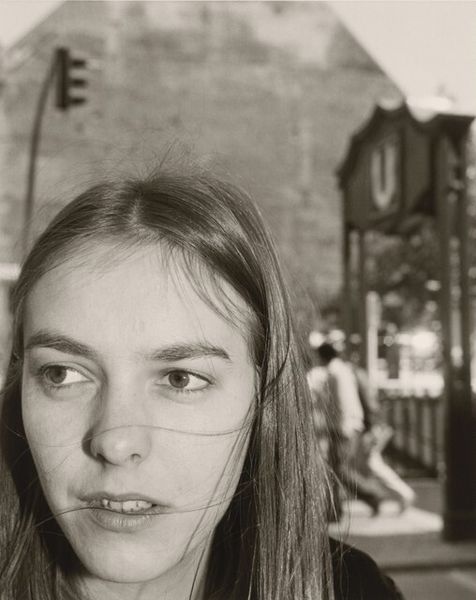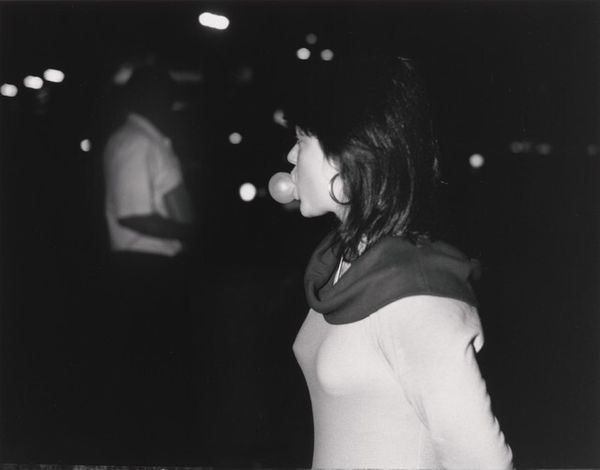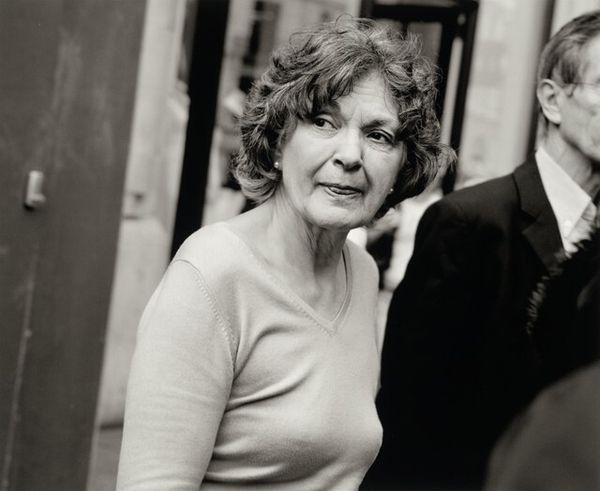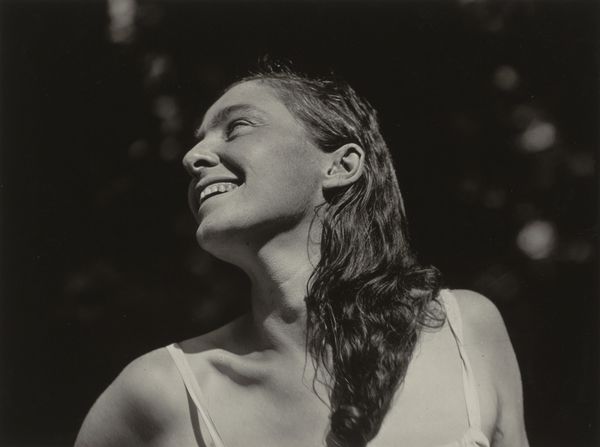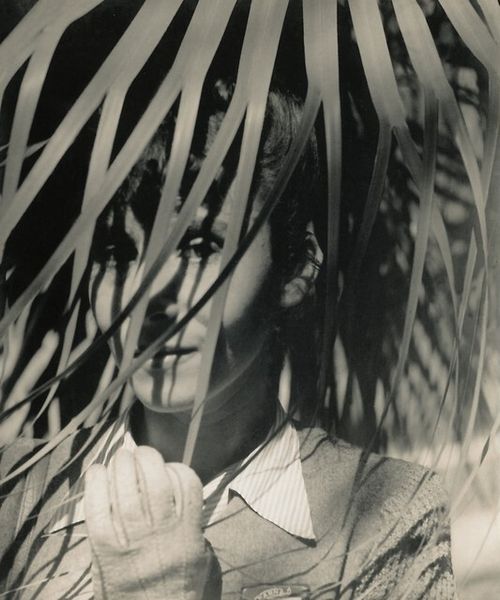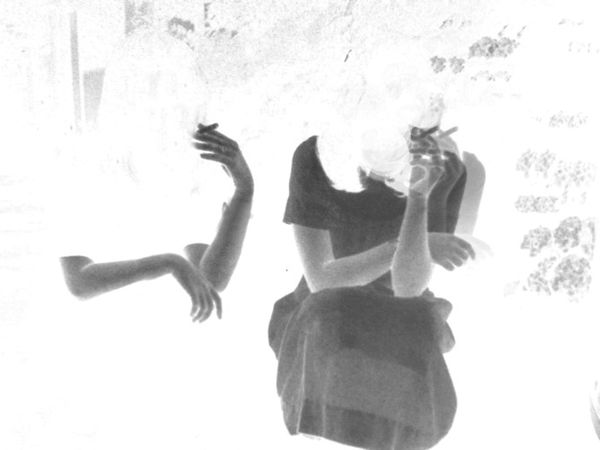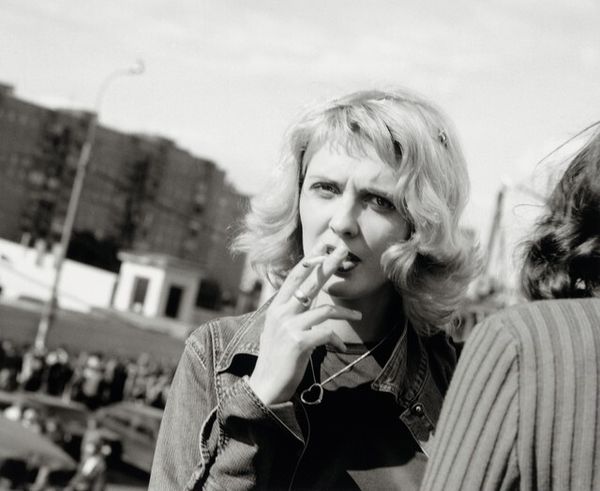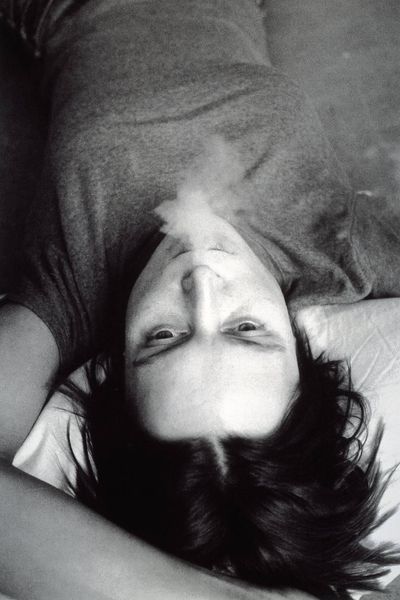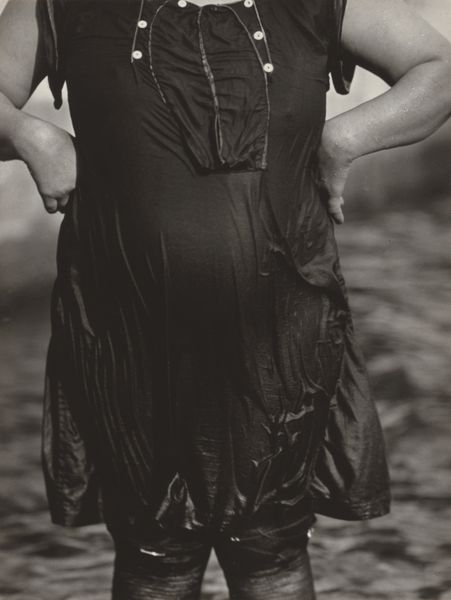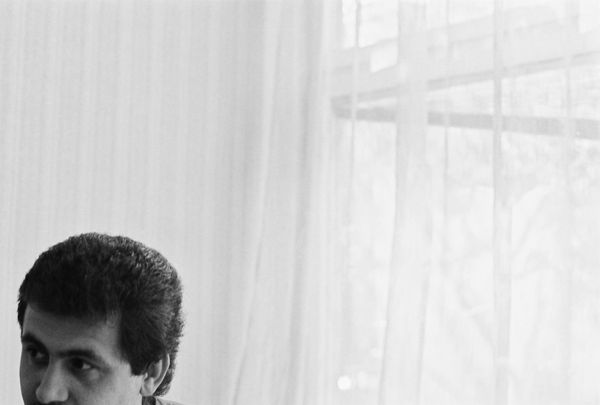
photography
#
portrait
#
black and white photography
#
wedding photography
#
street-photography
#
photography
#
black and white
#
monochrome photography
Dimensions: sheet: 27.6 × 35.4 cm (10 7/8 × 13 15/16 in.) image: 21.2 × 32.3 cm (8 3/8 × 12 11/16 in.)
Copyright: National Gallery of Art: CC0 1.0
Curator: Jim Goldberg's photograph, "Blade and Tank at the Beach," taken in 1988, offers a stark glimpse into a specific youth culture of that era. What’s your immediate take? Editor: There's a raw intimacy to this image that's both unsettling and captivating. The closeness of the figures, the sharp focus on one face, it all conveys a sense of rebellion and vulnerability coexisting. The black and white amplifies that edginess. Curator: The title itself points to an insider language, using nicknames as identifiers. We know Goldberg often worked within subcultures, documenting people on the fringes. Considering this, the photo challenges the conventional notions about representations of youths. The lack of traditional aesthetics or glamor is evident. Editor: Absolutely, that "outsider" perspective shifts the iconography, right? A traditional love photo, for instance, shows adoration, romance. Here, we get something harder to define: maybe defiance, possibly need, all tangled up. The young woman sticking out her tongue - in many cultures it is about ridicule, irreverence. Curator: That’s it! Goldberg is disrupting social constructs through visuals. By presenting these unconventional figures with such directness, he challenges viewers to reconsider their own preconceived judgments. The context becomes paramount. Without it, it’s easy to misinterpret. Editor: The backdrop almost seems to dissolve – houses become hazy shapes, reinforcing that what truly matters is the interplay between the "Blade" and "Tank," within their social frame. There's tension. But tension also speaks of vitality and intense self-expression. Curator: And the seemingly careless aesthetic choice further cements the photograph's historical value. The lack of staged perfection speaks volumes about a period and its values. Editor: Precisely, it pushes us to question the easy labels, and to explore layers of meaning in a culture of youth. What could be the symbolism that their nicknames had at the time, how do they reflect how the represented their self? Curator: Ultimately, “Blade and Tank at the Beach” asks us to delve deeper than the surface. It urges us to reconsider accepted stereotypes. Editor: It reminds us how quickly counter-cultural symbolism evolves, reflecting our ongoing negotiations with identity, culture, and, of course, the elusive notion of youth itself.
Comments
No comments
Be the first to comment and join the conversation on the ultimate creative platform.
